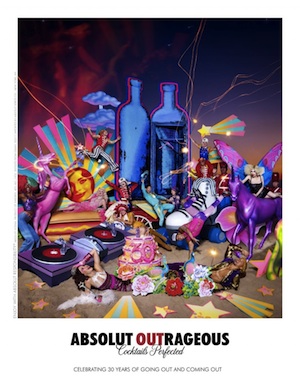
In a stunning twist on the term "inclusive," Absolut Vodka recently launched an ad campaign to pat itself on the back for marketing its brand to lesbian, gay, bisexual and transgender (LGBT) people. According to the
New York Times, Absolut plans to spend an estimated $4 million on a yearlong ad campaign called “Absolut Outrageous.” The campaign celebrates the way Absolut has deliberately targeted the LGBT community with advertising and promotions for 30 years. The ads have already begun appearing online, outdoors, on social media sites like Facebook, and of course, in specific media directed to the LGBT audience. The end goal? What else, but increased sales.
The last time we checked, raising profits by pushing a substance responsible for so much harm on a population that already experiences high rates of that harm doesn't qualify as cause for celebration - even $4 million's worth of celebration. Evidently, in Absolut's world, it does.
The LGBT community has grappled with the issues of alcohol use, related harm, and marketing and advertising for many years, even before Absolut started targeting it. The most recent version of the nation's prevention and health promotion framework,
Healthy People 2020, acknowledges that LGBT people are at increased risk for negative health outcomes such as alcohol-related harm. In addition, risks for alcohol-related problems are likely associated with belonging to a stigmatized and marginalized community.
In other words, LGBT populations experience a double-whammy of injustice and higher risk of serious harm from alcohol.
What part of that data says: "Please use positive images of LGBT identity to sell more harmful product to the community? While you're at it, please congratulate yourself endlessly in the process!"
To put it bluntly, Big Alcohol isn't discriminating about who buys its product...as long as they buy more of it.
Discrimination, stigma, and unfair treatment pose serious threats to the health of LGBT people. The alcohol industry is putting that information to work in the name of selling more Absolut, and exploiting health disparities as it sees fit.
Specifically targeting an already-disadvantaged group to purchase products that are harmful to the community's health and safety should be illegal, not celebrated. And for that gross misrepresentation of reality, Absolut belongs in the doghouse.





